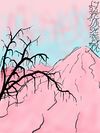Difference between revisions of "Tsien"
m (gov) |
|||
| Line 1: | Line 1: | ||
{{OOD}} | |||
{{Infobox country | {{Infobox country | ||
|conventional_long_name = Crowned Republic of Tsien <!--Formal or official full name of the country in English--> | |conventional_long_name = Crowned Republic of Tsien <!--Formal or official full name of the country in English--> | ||
Revision as of 22:45, 17 August 2019
 | This article or section is out of date. A country/countries relevant to this article have been removed from Sahar and have been retconned. Not everything here may still be considered canonical. This article was last edited by Ava (talk | contribs) 4 years ago. (Update) |
| Crowned Republic of Tsien Örjêhŝad jenüikä a Tŝihän |
||||
|---|---|---|---|---|
|
||||
| Capital and | Atŝjänü | |||
| Official languages | Tsienic | |||
| Demonym | Tsienic | |||
| Government | Crowned republic | |||
| - | King | Siänu Trahteg | ||
| Legislature | Interprovincial Government Coalition | |||
| Area | ||||
| - | 358,687.1 km2 138,489.86 sq mi |
|||
| Population | ||||
| - | estimate | 52,009,630 | ||
| - | Density | 145/km2 375.5/sq mi |
||
Tsien (Tsienic: Tŝihän , /tʃihæn/), officially the Crowned Republic of Tsien, is a country located in western Parshita. It is bordered by Dapencher in the north, Jaihup in the west, the Parshitan Sea in the south, and xxx in the east.
Etymology
History
The Tsienic people originate from the Miralayas. These people came down from the mountains and moved south. While moving down, the people claimed the land they had travelled through, creating the Tsien Empire. This Empire reached a little bit over the Naqui river to the Parshitan Sea. The Empire could've gotten away with it too, if it weren't for the meddling Rartakans. These Rartakans came from west and cut the empire in half, leaving the north side to (dissolve?) and the south side to grow on.
Geography
Geology
Climate
Biodiversity
Politics
Government
The nation is lead by king Siänu Trahteg, although actual having close to no power over the government of Tsien. The role of the king and the royal family is largely ceremonial.
The Crowned Republic of Tsien is governed by the Interprovincial Government Coalition (IGC), which is a parliament consisting of all the locally elected representatives of each province. The 22 provinces send their representatives (the number of representatives depends on the number of current inhabitants of the province and the popularity of the party that won the local elections plus the second most popular party's popularity) to Atŝjänü, the capital, where the parliament building resides. On the 10th of XXX (add month name here) the IGC starts work and all the members of the IGC are required by law to not leave the XXX (Capital province name) province. Furthermore, on every major sitting the king must be there in person and if the king is too ill to attend the sitting, the oldest son or daughter of the king must attend the event.
Regulations, which the IGC must decide on, are proposed by the citizens via petitions, the members of the IGC or by the Local Administrative Power. Only the regulations which affect the whole nation are let through to the IGC.
The Local Administrative Power (LAP) comprises of a coalition and an opposition. The coalition comprises of the two most popular parties of the local elections. The opposition consist of the next three most popular parties of the local elections. Each LAP of the provinces govern their province but they have far less power than the IGC. LAPs are there to lessen the paperwork, rule the nation more in depth and solve the problems of the citizens more efficiently.
Administrative divisions
Foreign relations
Military
Economy
Transport
Energy
Science and technology
Tourism
Demographics
Ethnic groups
The population is mainly Hedretic. During the Cathan reign the ethnicity of the Tsienics was greatly infused with that of Cathan's.
Urbanisation
Language
Education
Healthcare
Religion
Culture
Heritage
Architecture
Literature
Art
Tsienic art involves a lot of writing. This be calligraphy or paintings, the Tsienic alphabet and logograms are always praised upon, for they have held the Tsienic identity in place, and being able to write with the Tsienic alphabet and logograms shows true nature of Tsienic patriotism. The greatest works in painting have the writings on front an illustrative background with deeper meaning in the back. More traditional paintings tend to have focused on the script rather than the meaning it might have conveyed. Usually using pink in the background and with text with almost black outlines. The text tended to be more stylized and often unreadable or even technically incorrect just to produce aesthetically smoothing decorative art works. These paintings tended to cost a lot, one of the most known was sold at the price of 1,992,581.25 Tsienic Weikks (which is about 1,275,252 USD). Other forms of art discourage the use of the script and often depict gods or animals instead. Sculptures tend to be of gods and usually have a piece of a tablet or parchment, which has the name of the god on it, because it is uncommon to know the names of most of the gods by heart.

